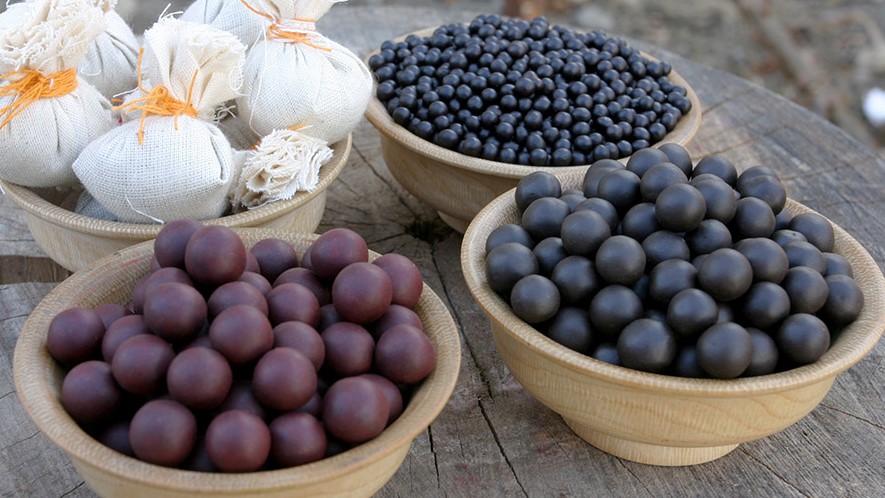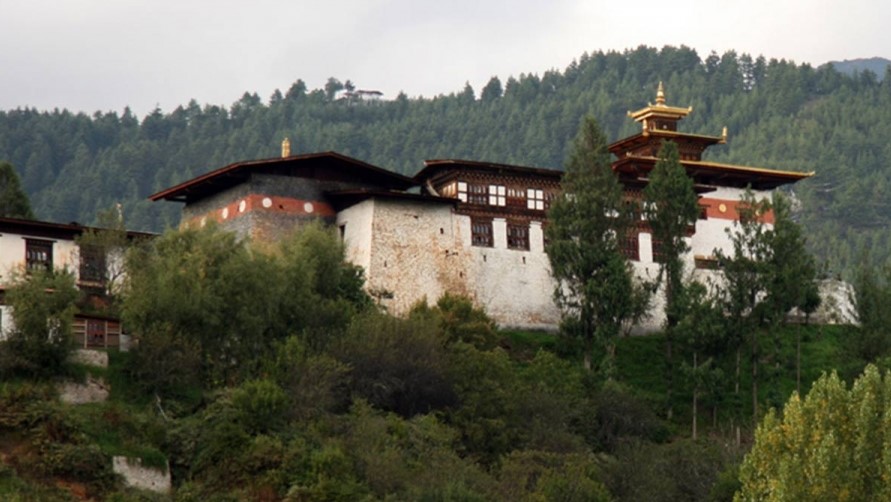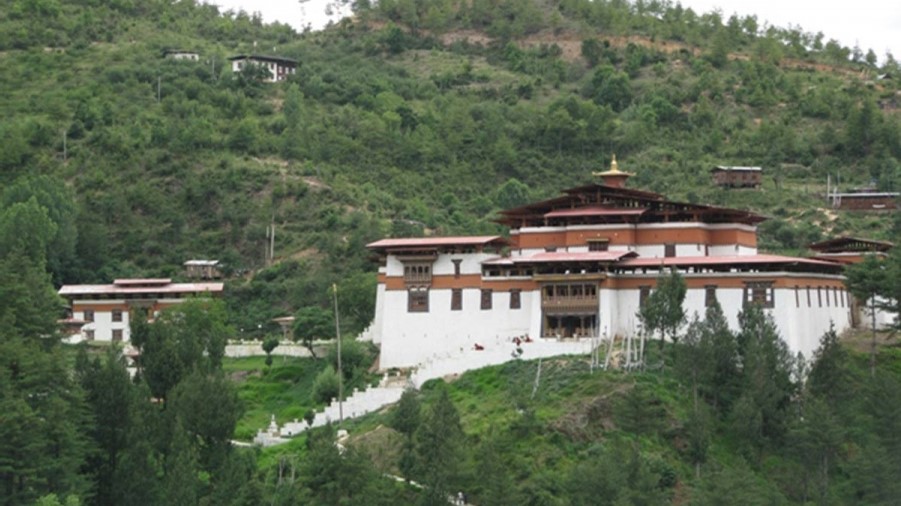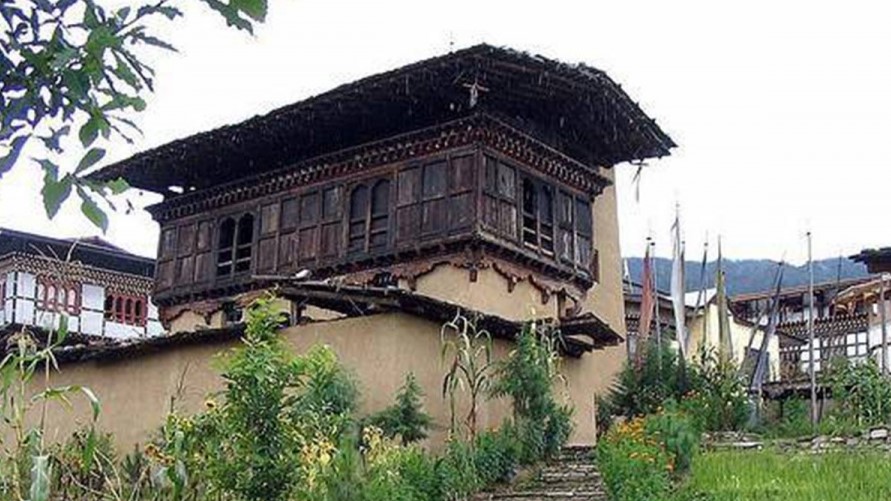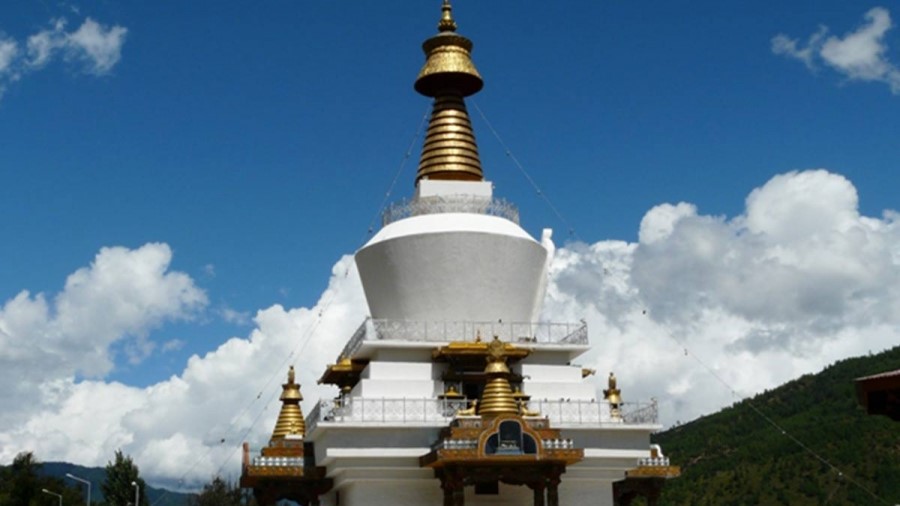The Traditional Medicine Services was established in the year 1968, under the command of our third King, Jigme Dorji Wangchuk. But National Institute of Traditional Medicine was established in the year 1988, for the welfare of Bhutanese people and to preserve its rich culture and tradition. The Traditional Medicine Services in Bhutan is fully integrated with modern health care and delivery system and is available in all 20district hospitals.
Changangkha Lhakhang
The date of the foundation of Changangkha Lhakhang is not exactly known but the elder people speak like that: ‘The descendants of Phajo Drugom Shigpo Son’s Nyima, established the monastery in the 15th century and called it “Phagpa Ranjung Tsuglakha”, “ the temple of Avalokitoshvara” statue which has appeared by itself”. In this main statue made of precious materials, they put relics which had appeared after Phajo’s cremation and many items of other kagyul lamas. Changangkha Lhakhang is the most important temple for the Children born in Thimphu, since the protective deity of children resides in this temple.
This statue, which still exists, represents Avalokiteshvara with 11 heads. Thanks to the prayers said by the descendants of this lineage, this lineage has given to the monk-body the famous 4th Desi Tenzing Rabgye (1638-1696), other abbots and eminent Lamas for the benefit of Bhutan.
Simtokha Dzong
Simtokha Dzong stands at a strategic point at the entrance to the Thimphu valley. When Zhabdrung Ngawang Namgyel was subduing the demons in the Thimphu Valley, a demon disappeared into a big stone where Semtokha Dzong stands today. The place was called Sinmo Dokha (Demon on the stone). This was constructed n the year 1629. Zhabdrung Rinpoche named this Dzong as Sanga Zapdon Dzong.
This dzong is the oldest dzong in the country and today it houses the Rigzhubg Institute for Buddhist studies.
Folk Heritage Museum
Folk Heritage Museum was founded by Her Majesty, the Queen Mother, Ashi Dorji Wangmo Wangchuck in 2001. It provides visitors and tourists with fascinating insights into the Bhutanese material culture and way of life. The Folk Heritage Museum is set inside a three storied, 19th century traditional house. It is a living museum that our present generations can learn and appreciate the life of our forefathers.
The museum gives you a glimpse of the traditional Bhutanese lifestyle, in addition to artifacts from rural households; it also displays an impressive collection of typical household objects, tools and equipment. The museum also organizes regular demonstrations of rural traditions, skills, habits and customs as well as hosting educational programs for children.
The activities of the museum follow a seasonal rhythm, just like the activities of a true rural household, offering you something new to see every time you visit the place. The museum does a remarkable job of recapturing the rural setting and ambiance of a traditional household by setting up paddy, wheat and millet fields, a traditional water-mill with mill stones more than 150 years old, traditional style kitchen gardens with vegetables that were typically grown during the past 100 years and even one of the traditional hot stone baths that are famous throughout the country.
In an effort to maintain our knowledge of indigenous natural resources, native trees and plants that had domestic uses in a rural Bhutanese household is grown, creating an oasis of greenery, right in the heart of the capital city of Thimphu.
Tourists may also avail the special offers of the museum at a nominal fee with an advance booking of at least one week. These include demonstrations of the traditional way of extracting oil or Markhu Tsene, brewing ara or Ara Kayne, roasting rice or Zaw Ngowni and pounding rice or Tham Dhungni within the museum premises. The museum also organizes an open air buffet lunch and dinner offering visitors a taste of traditional cuisine. The menu for such arrangements is available at the Museum and consists of a variety of traditional dishes from every region of the Kingdom.
However, lunch and dinner arrangements are only available for groups with five or more members. The museum is closed on government holidays. Hours of operation are from 10:00 am to 4:30 pm from Monday to Friday, from 10:30 am to 1:00 pm on Saturdays and 11:30 am to 3:30 pm on Sundays.
Memorial Chorten
Memorial Chorten built in 1974 in the memory of third king late Jigme Dorji Wangchuk, who is regarded as the father of modern Bhutan. It is an impressive monument and a very scared to the Bhutanese who make an endless procession circumambulating it everyday. The temple inside gives good examples of tantric Buddhist and its philosophy.
Visitors will find elderly Bhutanese people circumambulating the Chorten throughout the day. Chorten literally means ‘Seat of Faith’ and Buddhists often call such monuments, the ‘Mind of Buddha’. The chorten is an extraordinary example of Buddhist architecture and artwork with its gorgeous paintings and intricate sculptures.
The chorten is a large white structure crowned with a golden spire. It is located close to the center of Thimphu city and is one of its most iconic monuments.


